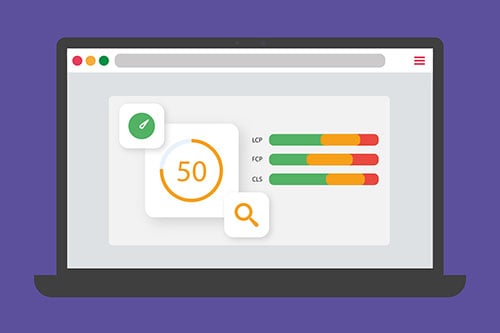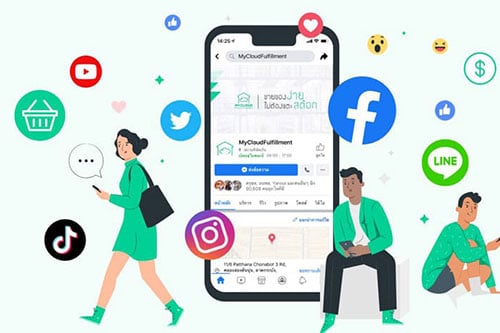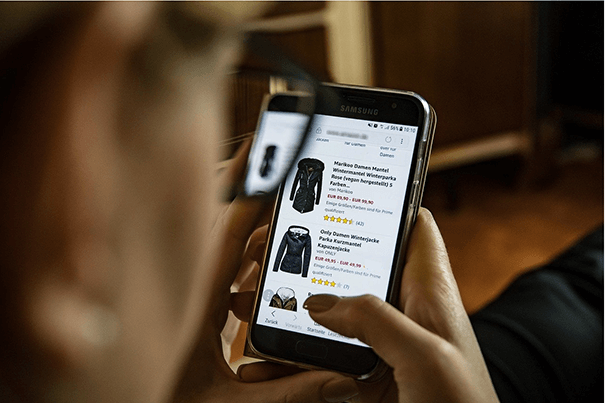Share this on
Google’s latest core algorithm update changed all our lives, says ecommerce expert Finlay Mure. But instead of fearing Core Web Vitals, use this to set your website up for a better long-term future.
There’s been much debate in online business circles about the impact of changes to Google’s core algorithm, Core Web Vitals. Most of these conversations—understandably—have been around the impact the loss of third-party cookies means for visitor tracking and data capture.
Part of marketeers’ lives since last year for mobile and earlier this year for desktop, Core Web Vitals is a central part of the company’s larger Page Experience Update. They encompass, as a recap, three new metrics for websites, Largest Contentful Paint, First Input Delay and Cumulative Layout Shift. These are essentially new ways for the search engine’s software to measure the initial time it takes to initially load the largest portion of the main content of your brand’s website, how quickly the site reacts to a user interacting with your online shop, and unexpected layout shifts. Doing well on these areas is vital if you want your site to be picked up and displayed in search.
What I think a lot of people have over-focused on, though, is that cookie aspect, and not what from now on they have to actually worry about—what matters as far as the Google algorithm is now concerned. Which is also what you as a retailer need to focus on for your customers right now: better page load and performance.
Getting these as optimised as you can has to be a number one priority. After all, the front end of your website is the first thing a potential visitor sees. And Google is essentially saying for you to be scored well, you must improve not just your personalisation, but your speed and your performance. Given this, one of the best way’s all types of ecommerce and omni-channel retailer players are finding to do that is going headless.
Don’t lose your head. But do still go headless
‘Headless’ is a term that’s bandied around so much now, that I could sympathise if you flinch at the term. Don’t worry, I’m not going to do you another Wikipedia article on the technical side of this, nor am I going to cold-call you—I have no problem with full disclosure that I’m a headless ecommerce provider.
But, given the conversations I have with the C-suites of the great B2C companies you’re working at, I will briefly outline why this headless approach has arrived in the nick of time to help you with not just Core Web Vitals but a host of your other challenges, too.
Retailers who provide faster load times and better experiences not only create higher engagement but they are now favoured in search results. There are a number of ways to optimise for a better overall user experience, however a headless or decoupled architecture offers a clear path for building highly-performant websites and applications that align with Core Web Vitals and provide the seamless, omni-channel experiences today’s digital consumers demand.
Another reason why B2C companies are moving to headless is to take complete control of their user experience across all sales touchpoints. They are rediscovering their ability to breakdown traditional silos that have long existed between front and back end teams and build a front end that not only complies with Google but is easily integrated with modern technologies.
What headless really offers is a way to build the very best architecture to sell the goods and services you want to get out there. It’s a way to avoid the common mistakes of the past and remove complexity that comes from traditional monolithic solutions (or paying some big SI or services company to do it for you) by supporting a best-of-breed, plug and play approach with API first principles.
That means you’re able to snap together any front-end engine you like, all the merchant and business services you need, like Product Information Management (PIM) or the Merchant Centre or your Order Processing module, creating the ideal back end commercial platform you can afford. And done right—especially if you go full ‘composable approach’ and source all the components as immediately usable modules from expert third parties—this is going to save you so much time and money.
Get on the train into our $5tn common ecommerce future
That work was worth doing, and it has given you value. But it came at a cost to set up; you’ve ended up, almost certainly, with a spaghetti and/or brittle tech stack that’s painful to update, and you can’t keep pushing the water up the hill any longer.
In 2022, an omnichannel site experience is table stakes now. It’s a given, and customers just aren’t impressed by it anymore—they expect it. So, you need to be building capability for the future, and headless is the best foundation for all your next moves in ecommerce functionality, especially if you want to actually stick to your knitting and concentrate on making your CX as great as possible and, increase your profits.
How is this ideally done: By applying an API (application programming interface)-first approach that offers flexibility to any and all ambitious, omni-channel brands like yours that want to stop being held back by the monolithic ecommerce technology of the past.
By removing the dependencies that clog up processes in these platforms between the front and back-end, progressive retailers will enable rapid change, more effective integration with future tech (think, AI, virtual/augmented reality), faster websites, better customer journeys, and improved business performance.
In real-world terms, that means API led headless approach can empower retailers to focus on creating new, unique shopping experiences and great CX. A final reason that this year really should be the year to go headless. It’s where the market’s heading—with or without you, with European brands leading the charge, I am glad to say.
Given that the global ecommerce sales are expected to cross the $5 trillion line this year, that suggests to me that jumping on this particular bandwagon, with the right partner, is the smart thing to do in these uncertain times.










